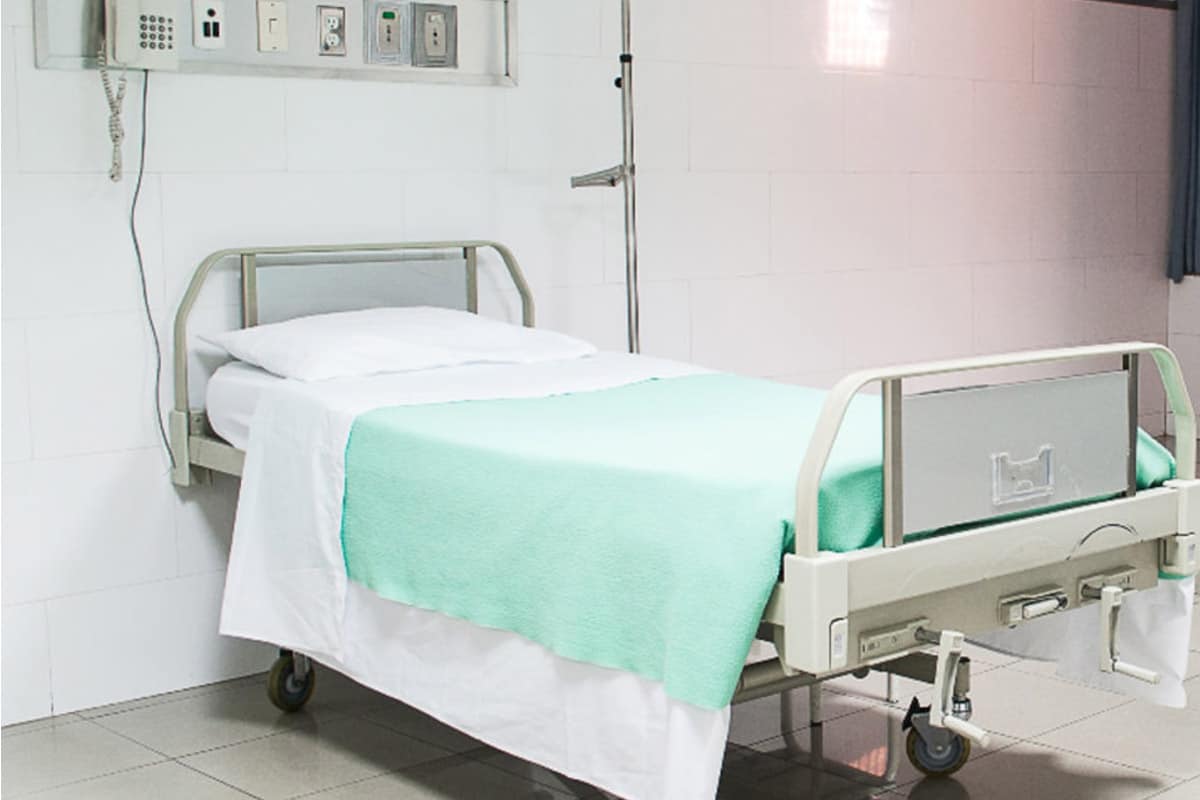Surface and underground mining can be physically demanding and potentially hazardous work. And while there are thousands of injuries reported annually by U.S. miners and mining contractors hurt by mobile equipment and other mining machinery, there are a number of other environmental factors that contribute to potentially long-term, life-changing health effects on miners.
So, what are the 10 most common long-term mining health risks? The 10 most common health risks to miners include:
- Respirable Dust
- Equipment Exhaust
- Noise
- Fatigue
- Thermal Stress
- Mental Stress
- Musculoskeletal Disorder
- Vibration
- UV Exposure
- Chemical Exposure
People commonly associate mine hazards with those immediate and obvious dangers, like heavy equipment, powerful conveyors, rock slides, or a methane gas explosion. But the mining environment can pose health risks that aren’t so immediate. In fact, some health issues are the result of repeated or extended exposure and can take years to develop. Unfortunately, without preventive measures and deliberate efforts to protect miners, by the time any measurable effects appear, it’s often too late. This article covers some of the most common long-term health risks posed by mining environments as well as preventive measure to avoid chronic life-threatening disease.
1 – Respirable Dust
Respirable dust is any airborne particle that can be inhaled. During extraction and processing, the two main types of respirable dust that can cause long-term harm to miners are:
- Coal Dust
- Silica Dust
The primary disease that can develop as a direct result of extended exposure to respirable dust is pneumoconiosis, or “dusty lung.”
When particles and fibers are inhaled, they can become lodged in the alveoli, the tiny sacks within the lungs that transfer oxygen from the air we breathe into the bloodstream. Since the body cannot dissolve or expel these particles, they can build up, create scar tissue, and ultimately limit the ability for the lungs to operate properly. The effects can range from impairment and disability to premature death.
The two main types of pneumoconiosis from coal dust and airborne silica are “black lung” and “silicosis,” respectively.
- Black Lung – Also referred to as Coal Workers Pneumoconiosis (CWP), this disease can leave areas of the lungs scarred, making it hard to breathe.
- Silicosis – As a result of long-term exposure to silica dust. The tiny fibers and crystals can become embedded, cause inflammation, and ultimately leave the lungs scarred with diminished function.
Other related diseases that can occur associated with prolonged exposure to respirable dust include:
- Chronic Obstructive Pulmonary Disease (COPD)
- Lung Cancer
Preventive Measures –
- Wear respirators when working in areas with airborne dust and fibers.
- Vacuum dusty clothing to remove accumulated dust prior to changing out of work clothes. Don’t use compressed air to blow dust from clothing.
- Remove work clothes and shower if possible, prior to going home to avoid transfer of dust to personal vehicles and home environments.
2 – Equipment Exhaust
Heavy equipment commonly runs on diesel fuel, which is known to produce more particulates than gasoline. Prolonged exposure to airborne particulates and other chemicals from engine exhaust can affect the mucus membrane of your airways causing:
- Irritation – Mucus membranes lining the nose, airways, and lungs can become irritated and inflamed.
- Asthma – Other symptoms similar to asthma can be caused by exhaust exposure, including shortness of breath, wheezing, chest tightness and pain.
- Dizziness and Headaches – Some people may have higher sensitivity to exhaust exposure, leading to cardiovascular and cardiopulmonary effects.
Extended exposure to diesel exhaust can compound and potentially accelerate the symptoms and progression of more serious or potentially fatal respiratory diseases, including lung cancer.
Preventive Measures –
- Wear respirators when working frequently or for prolonged periods around equipment exhaust.
- Avoid working in areas with high concentrations of diesel exhaust.
3 – Noise
Occupational “noise” is understood as the amount of acoustic energy exposure a worker may be subjected to during a normal 8-hour work period. Employers are required to protect workers from hazardous sound levels, either prolonged, like a loud engine, or in bursts, like an explosion.
Haul trucks, front end loaders, and powerful conveyors all operate at high volumes, often 24 hours per day. Typical noise levels at operating areas of a mine can exceed a safe limit beyond which, hearing can be temporarily or permanently affected. Common effects of continuous, high volume noise can include:
- Temporary Hearing Loss
- Tinnitus
- Permanent Hearing Loss
“Noise is one of the most pervasive health hazards in mining.”
MSHA’s Occupational Noise Exposure Standard
In MSHA’s Occupational Noise Exposure Standard, the organization states that “noise is one of the most pervasive health hazards in mining.” In its ongoing efforts to protect miners, MSHA has established the following levels of noise exposure and associated protective measures:
- Action Level – Exposure of 85 dBA over an 8-hour time-weighted average (TWA8). Workers exceeding the Action Level must be enrolled in a Hearing Conservation Program (HCP).
- Permissible Exposure Level – TWA8 exposure at or above 90 dBA requires the miner to be enrolled in an HCP and use operator-provided hearing protection. The mine operator must also ensure that all appropriate administrative and engineering controls are in place for miner protection.
- Dual Hearing Protection Level – TWA8 exposure at or above 105 dBA requires the miner to be enrolled in an HCP and use operator-provided hearing protection that includes concurrent use of both bud-style and muff-style devices.
- Maximum Exposure Level – No miner should be exposed to noise at or above 115 dBA, even when wearing hearing protection.
To further protect miners from long-term hearing loss, MSHA established a Hearing Protection Program (Hearing Conservation Program?).
Preventive Measures –
- Avoid prolonged periods of work in high noise areas.
- Wear all required hearing protection when working in high noise areas.
- Take part in your company’s HPC, which should include periodic hearing tests.
4 – Fatigue
Miners working extended or consecutive shifts without adequate rest can suffer from fatigue. In the short term, fatigue can lead to several conditions that can diminish performance and increase risk, including:
- Slow reaction times
- Impaired vision
- Poor decision-making
- Weakness
The long-term effects of chronic fatigue can:
- Lower the strength and effectiveness of the immune system
- Intensify the effects of depression
- Heart disease
- Diabetes
- Anxiety
Preventive Measures –
- Avoid repeated work shifts that result in chronic sleep deprivation.
- Practice good sleep hygiene, planning for adequate rest at regular times.
5 – Mental Stress
Working for prolonged periods in fast-paced environments under tight deadlines while operating heavy equipment with narrow margins for error and create sustained metal stress.
Extended exposure to mental stress can lead to long-term health issues including heart disease, anxiety, sleep disorders, and hypertension (high blood pressure).
Preventive Measures –
- Avoid toxic work environments with abusive coworkers or supervisors.
- Take part in employee assistance programs (EAPs) with mental health and counselling services when available.
- Use vacation time and encourage subordinates to do so rather than letting it lapse.
6 – Musculoskeletal Disorder
Musculoskeletal disorders, or MSDs, are a range of chronic problems that affect the body’s structure, muscles, connective tissues, and nerves as well as circulation. MSDs are often the result of overuse or repetitive stress injuries. Commonly affected areas include the back, neck, and hands (wrists).
Back injuries resulting in chronic back pain are some of the most common and costly MSDs in the mining industry.
Preventive Measures –
- Be sure your office workstation is set up ergonomically.
- Avoid repeated or intensely physical work situations that stress your back and hands.
- Practice proper lifting and carrying techniques to avoid back strain and injury.
- Wear wrist guards and back supports as needed for the type of work you’ll perform.
7 – Vibration – Mechanical Oscillation
Also referred to as “whole body vibration,” long-term exposure to occupational mechanical oscillation can lead to a range of chronic issues, including persistent discomfort, spinal degradation, and back pain.
Miners working on or around wash stations with vibrating screens and rock crushers at sand and gravel mines may be exposed to frequencies of vibrations that can have lasting health impacts.
Preventive Measures –
- Avoid prolonged work on or around equipment that produces intense mechanical oscillation.
- Be aware of the connection between vibration exposure and the associated health effects.
8 – Thermal Stress
The stress of working in extreme temperatures for extended durations can take its toll on the body.
Working in intense heat can lead to dehydration, heat stroke, brain swelling, and potentially permanent organ damage.
Extreme cold temperature exposure can lead to hypothermia, frostbite, and even death. In extreme cases, frostbite can result in chronic cold weather sensitivity, tissue and nerve damage, or even the loss of extremities or limbs.
Preventive Measures –
- Heat Stress – Stay hydrated, take frequent breaks, and avoid working in direct sunlight if possible.
- Cold Stress – Wear adequate layers of clothing, including hat, gloves, and socks, to avoid heat loss in cold conditions. Wear breathable water-resistant outerwear to stay dry in wet conditions.
9 – UV Exposure
Repeated and extended work in direct sunlight can expose workers to unhealthy doses of ultraviolet (UV) radiation. UV exposure can lead to both eye and skin disease resulting in cataracts and skin cancer (melanoma).
Melanoma can metastasize, or spread throughout the body and into the brain, causing extensive health issues and premature death.
Preventive Measures –
- Avoid working in direct sunlight when possible.
- Wear UV-rated clothing, a hat, and protective eyewear when working in exposed areas of intense sunlight.
- Wear SPF 40 (Sun Protection Factor), or higher, skin products to protect exposed skin.
10 – Chemical Exposure
Exposure to toxic and carcinogenic (cancer-causing) chemicals can affect your eyes, skin, and mucus membranes of your airways. In some cases, the health effects of chemical exposure can take years to show up.
Chemical exposure can include fumes from a range of cutting or cleaning work as well as remediation work that involves lead or asbestos.
Preventive Measures –
- Read all SDSs (safety data sheets) for chemicals you’ll work with to ensure you know the health risks and are prepared with the appropriate personal protective equipment (PPE).
- Avoid direct exposure to toxic chemical environments.
- Work in well-ventilated areas.
- Wear all required PPE, including respirators, eye protection, or hazmat suits, depending upon the work being done.

